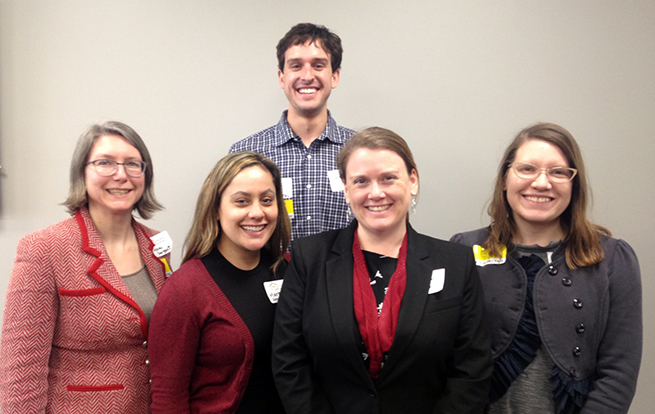
“There is no safe level of exposure to lead for a child.” This is the mantra that Ecology Center staff, parents, and others carried to Lansing on March 8th. About 60 environmental advocates, public health professionals, lead-abatement contractors and other citizen-advocates braved gale-force winds for the Michigan Aliiance for Lead Safe Homes 6th annual Lead Education Day. Our coalition partner, Michigan Alliance for Lead Safe Homes (MiALSH) worked to connect constituents to over forty legislators to discuss the real hazards of lead lurking in and around Michigan homes.
Each time a window or door is opened or closed, friction occurs which can create dust. For houses built before 1978—the year lead was banned for use in paint—the resulting dust can be contaminated with lead. The potential for exposure increases anytime an old home is remodeled. Michigan’s housing stock is older than the country average. 70% of the homes in the state (versus about 50% nationally) were built before 1978 and likely have windows, doors, cupboards, and porches coated with lead paint.
What legislators can do:
There’s much we can do on the state level to prevent lead poisoning. On March 8th, lawmakers learned about vital strategies, including:
1. Universal lead testing of all children one and two years of age. In 2015 about 5,000 Michigan kids had elevated blood lead levels (above 5 mg/dL). But the true total is likely much higher because only about 20 percent of the state’s children under six are currently tested for lead exposure.
2. Continued funding to support the state’s lead cleanup program. This money is leveraged to bring in federal funds to remove potential lead hazards in homes. After a child is discovered to have an elevated blood lead level (BLL) the source of exposure must be identified. Most often the cause is lead paint in the home. The second most common exposure source is soil around the home. Both of these hazards can be mitigated through state programs that replace old windows and doors and remove contaminated soil.
3. Stop using kids as lead detectors by requiring that homes in Michigan undergo a one-time lead inspection risk assessment to identify lead hazards before a home is sold or leased to a new resident.
Following on the heels of the Lead Education Day, Governor Snyder passed an executive order to create a permanent Child Lead Exposure Elimination Commission. On March 16th, Governor Snyder announced the names of the 15 members of the commission. Rebecca Meuninck, Ecology Center Deputy Director, has been appointed for a two-year term to serve on the commission. The commission will work with the administration and legislature to implement policy recommendations to end childhood lead poisoning.
Money Sense
Lead Education Day advocates were pleased to point out that investing in lead poisoning prevention is not only good for our health; it’s also good for our collective wallet. The annual cost of lead exposure in Michigan children is approximately $270 million ($112 million of which is paid by taxpayers), according to the Ecology Center’s 2016 report, The Cost of Lead Exposure and Remediation in Michigan. For the report, researchers added up conservative estimates of four societal costs directly impacted by lead poisoning: increased health care, increased adult and juvenile crime, increased special education, and decline in lifetime earnings.
Remediating the most at risk homes, however, would cost the state approximately $600 million, giving a profitable return on investment in less than three years. This is timely information for the legislators, as they will be working on the state budget over the next few months.
What can you do at home
- Don’t allow children (and pets) to play in bare soil;
- Remove shoes before entering the house;
- Wet-mop floors weekly;
- Remove dust with a wet cloth (instead of dry-dusting);
- Frequently wash children’s faces, hands, and teething toys;
- Always use cold tap water for cooking;
- Eat a diet rich in Calcium, Iron, and Vitamin C;
- Get children under 6 tested for lead;
- Contact the Ecology Center to see how you can get involved!
Ecology Center Contacts: Rebecca Meuninck or Melissa Cooper Sargent

